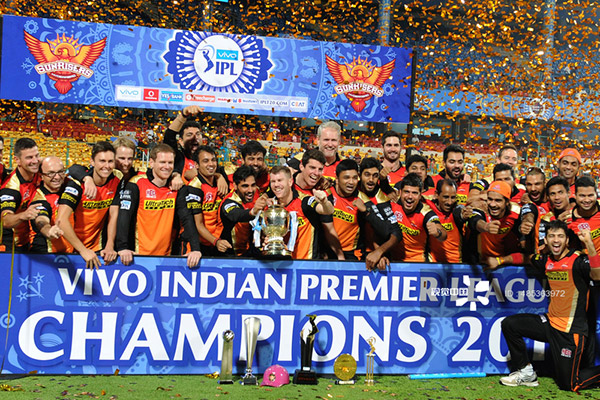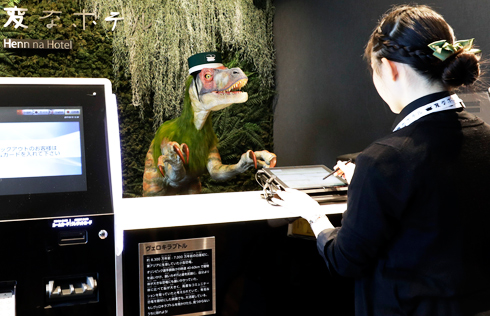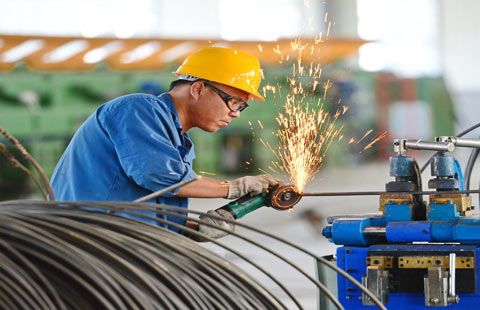Smartphones score big with Indian cricket
 |
|
Sunrisers Hyderabad pose for a team photograph as the players celebrate victory against Royal Challengers Bangalore after the trophy presentation in the final Twenty20 cricket match of the 2016 Indian Premier League. [Photo/Agencies] |
Sport gives Chinese manufacturers a boost in market
"It's an invasion of Chinese brands," an Indian cricket administrator is reported to have remarked last week after Oppo, a Chinese smartphone maker, shelled out $162 million to sponsor India's national cricket teams for the next five years.
While the comment may have been in jest, it would be a telling reference to Oppo outbidding Vivo, another Chinese phonemaker, thus joining labels such as Coca-Cola, Pepsi, Star TV and Hyundai, all past sponsors of the teams.
Counterpoint Research said Chinese brands grabbed four of the top five spots in market share in the last quarter of 2016.
The price-sensitive nation of 1.34 billion has an estimated 240 to 300 million smartphone users who bought 120 million units last year, which are estimated to have generated $15 billion to $20 billion in sales revenue.
Its large middle class, estimated at 300 to 400 million, craves internet access via the latest smartphones.
Reports say around 500 million smartphones may be bought in the next few years as the country embraces a cashless economy. The annual sales figure is forecast to reach 240 million units by 2020.
Chinese brands are now itching to eject Samsung from the summit and also battling Indian, South Korean, Japanese and US brands, said Nicole Peng, research director at global consultancy Canalys.
The Chinese offensive began a few years back. Huawei and Gionee sponsored two Indian Premier League cricket franchises. Xiaomi also had smash hits with online flash sales-in which buyers are lured to heavily discounted sales.
In July 2015, Alibaba-backed PayTM, an online payments company, clinched a deal for over $31 million through 2019 to sponsor titles for all official domestic and international cricket matches played in India.
Three months later, Vivo was reported to have spent as much as $23 million to sponsor the Indian Premier League title for just two years, 2016 and 2017. The IPL is the most popular franchise-based cricket tournament in the game's shortest format and commands a global TV and online audience of more than 1 billion.
Next, Chinese brands such as OnePlus, Motorola (owned by Lenovo), LeEco, ZTE and CoolPad joined the gold rush.
Affordable, feature-loaded, nifty Chinese smartphone models materialized in various price bands, from as low as 3,000 rupees to 30,000 rupees ($45.80 to $458).
In an online straw poll conducted by China Daily this month, a majority of Indian consumers agreed with this statement: "Chinese brands have flooded/captured the Indian market."
The reasons for that might be found in a Pew Research report released last week. While smartphone ownership in China jumped 31 percentage points since 2013, in India it has increased by only 6 points, suggesting a great deal of room for future growth.
Signs to that effect emerged last year when India surpassed the United States as the second-largest global smartphone market in terms of users. Smartphone shipments from factories to sellers grew by a healthy 18 percent in India last year, compared with a modest 3 percent globally and 6 percent in China, according to Counterpoint data.
At the same time, global smartphone sales to users grew by just 7 percent last year to 1.5 billion units, according to Gartner Consulting. As sales growth slowed domestically, Chinese vendors saw a "new China" in next-door India.
Xiaomi said it "set a record" by selling more than 1 million smartphones in India from Oct 1 to 18 last year, a festive period comparable to Spring Festival. Its smartphone revenue surpassed $1 billion last year in India, where cricket is "a way of life, a culture, even a religion", in the words of Sky Lee, president of Oppo's India branch.
Even Apple ensured its CEO Tim Cook's attendance at an IPL match last year and received some media coverage, despite the minuscule market share in India of iPhones and iPads, which are considered costly.
Oppo's deal may well prove timely as well. In terms of sales, Oppo grew from 1.2 percent of total market volume in December 2015 to 11.7 percent in January 2017, according to GFK data.
Oppo's logo will now be emblazoned on Indian cricketers' jerseys, promising almost nonstop exposure in print, online, mobile and broadcast media, not only through the end of the contract in March 2022, but thereafter from rebroadcasts.
"Sponsoring cricket is key to gaining mass market popularity and brand recall," said Neil Shah, Counterpoint's research director.
Many phone users in India, reached over the internet, agreed. "For over two years, a retail outlet displayed an Oppo logo, but I never felt it was a big brand. Now, its brand value is going up," said Ajay Anand, a writer in Mysuru.
To appeal to India's highly divergent market-with stark urban-rural, literate-illiterate, male-female and young-old divisions-Chinese brands have adopted multipronged strategies. They include online flash sales, e-commerce tie-ups, an offline push through dealer partnerships, slick advertising campaigns featuring celebrities ($200 million forecast to be spent in 2017), product reviews, social media campaigns and generous retailer margins.
The strategies appear to be working. Ivan Crasto, a sports content strategist in Mumbai, India's commercial capital, said he, his wife and son all own Chinese smartphones.
"Good price, good products. Haven't had any bad experience. They exceeded my expectations. Am more inclined now to buy Chinese brands than Indian or other foreign products," Crasto said.
Rajul Hegde, an entertainment reporter in Mumbai, bought a OnePlus 3T smartphone after noticing it in ads and product reviews. "For its price, it has the best specs. Other foreign brands cost double but didn't match the specs. I'm impressed."
So is S. Saket, a communications professional in Mumbai. He said he bought a Huawei-built Honor Holly phone and Xiaomi Mi5 for their "good finish and premium look", which, he said, other brands don't deliver for the same price.
Arpit Agarwal, a principal of Blume Ventures, an Indian investment firm, said: "Chinese brands were seen as being of inferior quality in the past. But now the perception is changing."
Chinese brands such as Xiaomi, Oppo, Vivo, Lenovo and Huawei will likely work to strengthen their association with Indian sports even more. Visibility is critical for the success of their multibillion-dollar investments, which include joint ventures for contract assembly plants, warehouses, logistics, call centers and service centers.
But not everyone is applauding. The Xiaomi online user forum includes thousands of comments from disaffected consumers.
A common complaint is that Chinese products are not durable, and after-sales service tends to be poor.
"Chinese make use-and-throw-away products. There is always a glitch in functionality," said S. Dave, a digital strategist in Mumbai.
Puja Lall, a customer relationship manager in New Delhi who owns a Lenovo K3 Note, said: "It's high time Chinese products deliver utility rather than just being very cheap."
K.K. Suresh, a cameraman in Mumbai who owns a Xiaomi Redmi, said, "Chinese brands must offer user manuals in English and regional Indian languages."
Some critics think Chinese brands' Indian forays and rush into cricket may come unglued.
Star TV, Oppo's predecessor as a team sponsor, did not renew its deal citing "volatility" in India's cricket administration, a reference to the sport's legal troubles.
Several years ago, corruption charges and scandals besmirched the IPL, prompting Pepsi to withdraw its sponsorship prematurely.
"There are plenty of Indians who hate cricket because of its excessive commercialization and excessive frequency of matches," said A. Shaikh, a media analyst in Mumbai. "Cricket sponsorship could backfire."
In the coming years, there also may be tough competition from Indian brands that are becoming popular.
Also, if Chinese companies shift their manufacturing from China to India-encouraged by the government's Make-in-India campaign-the perceived corporate "invasion" may well morph into a war among Chinese brands' Indian-made phones, analysts said.

Related story: Indian consumers vote for Chinese smartphones























